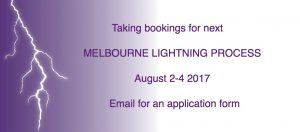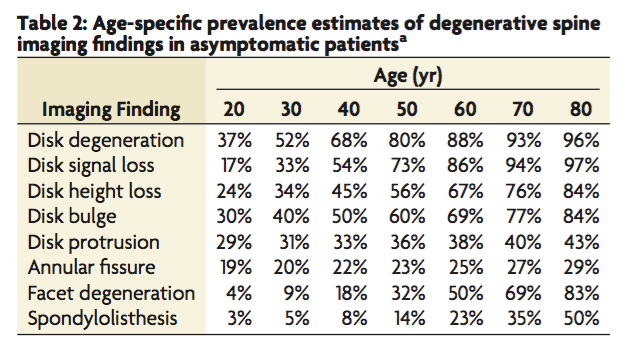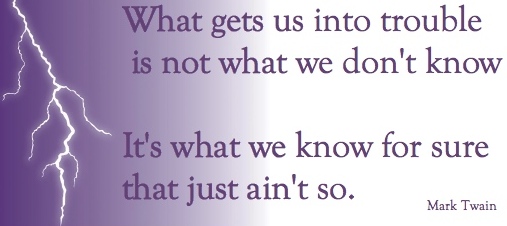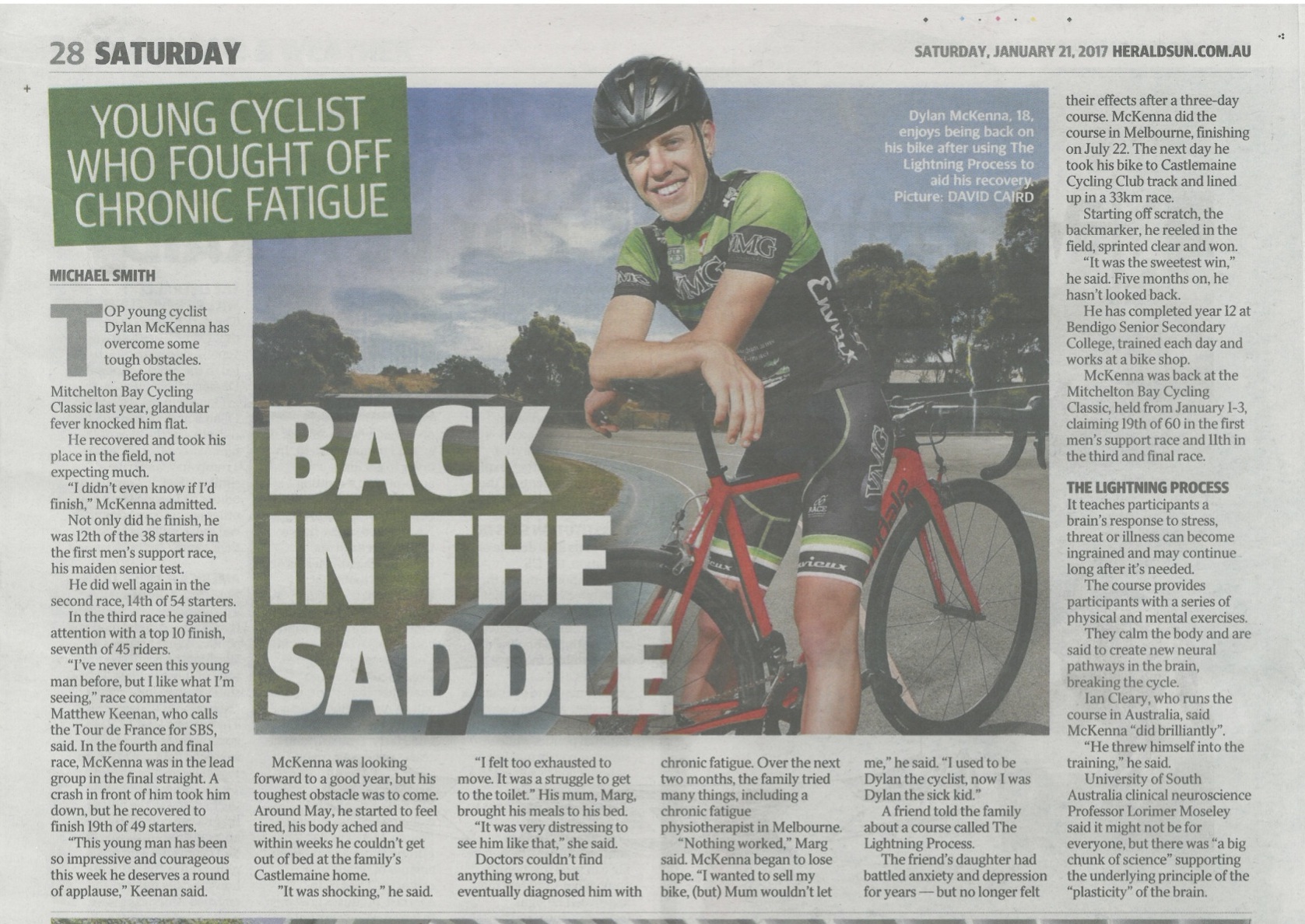What is fatigue?
What is fatigue?
It’s worth pondering if you are suffering from chronic fatigue that rest and sleep USE energy. Lying still uses energy. Sleeping uses less but only a fraction less. It’s still ‘draining your energy resources’. It’s interesting to ponder that healthy people wake up each morning having used energy to sleep but feel more ‘energised’.
There is a difference between the energy in our body and how ‘energetic’ or fatigued we feel. Fatigue is not running out of energy.
You won’t rest your way out of chronic pain or fatigue.
Challenging the way we think about chronic pain and chronic fatigue can be an important first step to recovery.
Life’s Ups & Downs
RAS – A Piece of the Puzzle
The video below is a useful way to think about just how the brain processes all the information that comes its way.
With the brain located inside our skull it relies on our nerves to send it important information. This includes information about the world around us and the working of our body. All of this information is sent along nerves / spinal cord to the brain but not all of it is important.
This information goes through a filtering process so only vital information gets to the brain. But what determines ‘vital’?
Any perceived dangers will take priority. We are alert to ‘threats’. If we incorrectly think a safe thing is dangerous this will alter how our brain works and how the body responds.
What would it be like to train your brain about what is important and what is not. What to pay attention to and what to ignore.
While this video perhaps focuses on one important element – focus – our Reticular Activating System is influenced by many things including past experience, trauma, beliefs, emotions, words we and other use, memories, conversations and who we hang around.
This Reticular Activating System is integral to our awareness of the world, our sense of self and how we respond to things AND it can easily be trained.
Think about how this might be useful is understanding elements of anxiety conditions, depression, self-esteem as well as pain and fatigue conditions.
There is neuroscience behind the saying
“WHERE ATTENTION GOES ENEGY FLOWS”
Autobiography in Five Short Chapters
I sent out this poem recently to my Lightning Process Graduates and so many replied to say how much they related to it.
The process of getting out of auto-pilot and retraining our brain / body to respond differently is not always smooth. It’s a journey that this poem captures well.
Autobiography in Five Short Chapters
By Portia Nelson
I
I walk down the street.
There is a deep hole in the sidewalk
I fall in.
I am lost … I am helpless.
It isn’t my fault.
It takes me forever to find a way out.
II
I walk down the same street.
There is a deep hole in the sidewalk.
I pretend I don’t see it.
I fall in again.
I can’t believe I am in the same place
but, it isn’t my fault.
It still takes a long time to get out.
III
I walk down the same street.
There is a deep hole in the sidewalk.
I see it is there.
I still fall in … it’s a habit.
my eyes are open
I know where I am.
It is my fault.
I get out immediately.
IV
I walk down the same street.
There is a deep hole in the sidewalk.
I walk around it.
V
I walk down another street.
Shocking MRI results for Back Pain
MRI RESULTS FOR BACK PAIN – SHOCKING FINDINGS
This post is all about PAIN. It relates to you if, and only if, you have experienced pain before. So I guess that means you!
What follows might challenge you. Modern pain science is showing us that most of what we used to think about pain was wrong.
Look closely at the picture below.

Fit, smiling, strong, healthy robust people living life to the fullest and running a half-marathon after possibly months of training a few times a week. Would you like to have a body like theirs?
Let’s see what ‘having a body like theirs’ actually means. Let’s use technology to look inside with an MRI, X-Ray, CAT scan. etc
What we find in these healthy bodies may challenge your thinking of ‘normal’ AND ‘healthy’ and is at the heart of the revolution in modern pain science and central to my work.
If these happy, healthy, fit and strong people were to go and have their spine scanned the MAJORITY would have abnormal structural issues with their spine. Remember these are fit healthy PAIN FREE people.
So abnormal is normal.
Assuming an average age of 40 years old then 68 % will show degeneration of the vertabrae in their back. HALF will have physical fleshy bulges in their discs, a THIRD will have a spinal disc protrusion, a FIFTH will have annular fissures, one in ten will have facet degeneration and every 20th runner will have spondylolisthesis. On top of this, the majority will have arthritic changes in the bones and joints ………..AND they are fit and healthy people who are NOT experiencing back pain.
(See graph below to find what you would expect to find inside a healthy person of your age).
Unless you are up to date with modern pain theory those finding should challenge you.
How can someone have a visibly ‘broken’ bit but no pain. Aren’t these things a problem? Is it even safe to be running with these things going on in the spine? I’m sure you’ve heard of people having slipped, bulging, herniated discs and how much they hurt. You may have heard health practitioners talk about these things as the cause of back pain. You might even have been told that YOU have one of these broken bits and you may have had a operation or procedure to ‘fix’ these broken bits.
But these structural issues are found COMMONLY in most healthy PAIN FREE people. It’s worth having that concept sink in a little. Why aren’t THEY experiencing pain? Why is there no pain?
The old model of pain that we all grew up with struggles with explaining this. Modern pain science explains it well but what I am about to say will probably challenge you. You may feel yourself ‘dig in’ and go into battle for the old model of pain. (“Yeah but…….” is a common response). But modern pain science is really clear on this.
These things do not cause pain. Infact nothing in the body can cause pain.
Modern pain theory requires us to put aside everything we have learnt about pain. The old bio-mechanical model saw pain as a ‘thing’ occurring in the body when things are broken. Modern pain science now says pain is an experience not a thing and it is generated in the brain. ALL PAIN. IN THE BRAIN. ALL THE TIME. So that means your pain too.
The only thing the body can produce is a message (technically called a ‘nociceptive message’) to alert the brain that there is something that could be potentially dangerous. But that is not pain. You can have these nociceptive messages with absolutely no pain at all.
So back to the back. Aren’t those things that have show up in the MRI’s a danger that warrants our attention. Not necessarily and mostly not. Those abnormalities are normal remember. Our spines are robust and living flexible structures. Authors of ‘Explain Pain’, David Butler and Lorimer Mosely call these abnormalities the ‘kisses of time’ or internal wrinkles. We all have them. From the age of 10 you will start to see spinal degeneration – it’s called aging. It doesn’t mean a threat.
So why do some brain’s see an abnormality (like a bulging disc) as a threat and generate pain while in others peoples brain’s, like our running friends in the picture, ignore these normal abnormalities?
There is no single answer to this because …. it’s your brain. We know the assessment of threat process that generates pain is influenced by many things such as stress, lack of sleep, lack of exercise and movement, past traumas and emotional state. One of the largest study of back pain showed that mood was a better predictor of a back pain incident than anything else.
Another significant thing which influences whether your brain determines this normal abnormality as a threat is really important – the information your brain receives by way of ‘diagnosis’. The very act of getting a scan and seeing or being told that you have a ‘broken bit’ influences brain function. A scan ‘just to be on the safe side’ actually can ironically not be that ‘safe’ after all. Your risk of ongoing back pain issues increases relative to how quickly you get a scan done. The sooner the scan (or belief about threat) the larger the chance of ongoing back pain.
So the duration of a back pain experience, that may have been triggered by stress, can then be prolonged by the belief that it is ’caused’ by a bulging disc.
A new initiative being taught to Australian doctors (The Choose Wisely programme) now encourages NOT to send back pain clients to get scans done except under specific circumstances and instead the advice is to provide re-assurance. The problem is that in a 10 minute GP visit it is not possible to teach people modern pain theory, assess what is going on in this person’s life (now and past) to work out why the pain and why NOW then give ‘non-drug’ tools to address the actual issue.
So what to do? We know drugs are not effective for chronic back pain. Spinal surgeries (spinal fusion or laminectomy) are some of the most performed operations in the states yet the incidences of back pain is INCREASING.
The solution lies in a better understanding of pain. The back’s not broken. The old pain model was broken.
So to beat chronic pain it is important to understand what pain IS and what pain is NOT.
If you would like to learn more about chronic pain (back pain, migraine, osteo-arthitis pain, pelvic pain, fibromyalgia pain) this simple 5 minute video is a nice introduction to modern pain science and great explanation of why the Lightning Process takes such a broad multi-pronged approach to retraining the brain out of pain.
If you would like to learn more about the concepts behind the Lightning Process and pain you can download the Lightning Process and Pain Audio Book. HERE
Or just email me for a phone consultation.
Brinjikji W1, Luetmer PH2, Comstock B3, Bresnahan BW4, Chen LE4, Deyo RA5, Halabi S6, Turner JA7, Avins AL8, James K4, Wald JT1, Kallmes DF1, Jarvik JG9.
Aha Moments
The future looks bright
The Lightning Process is not just about getting your health back. It’s about getting your LIFE back.
Chronic Illness impacts every facet of one’s life and so with recovery comes so much more than good health.
A limited life becomes one filled with possibilities again.
Well done to LP Graduate Georgia who has gone on to start her own business selling funky handmade hair bands and jewellery.
Her ‘Brighton Beach Bands’ business supports Indigenous kids in Far North QLD who learn to sew & and make income. How cool is that? Well done Georgia. (www.brightonbeachbands.com)
I just got another email from a Lightning Process graduate today who after just 4 months scored her dream job. Well done H.
These things still take work but people have the resources (energy, focus, confidence) to take the steps required to make it happen for them.






